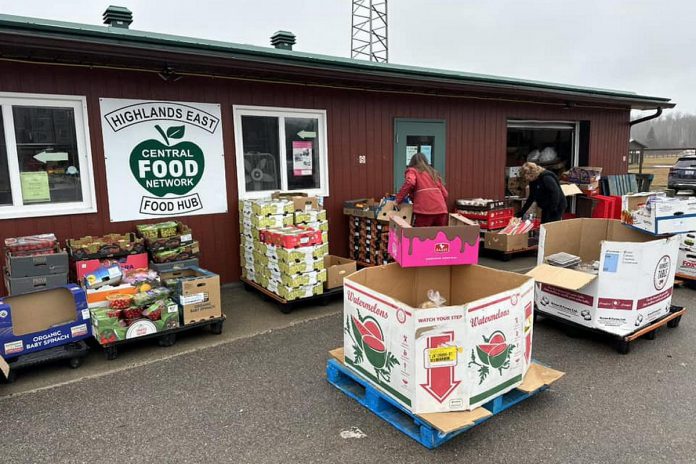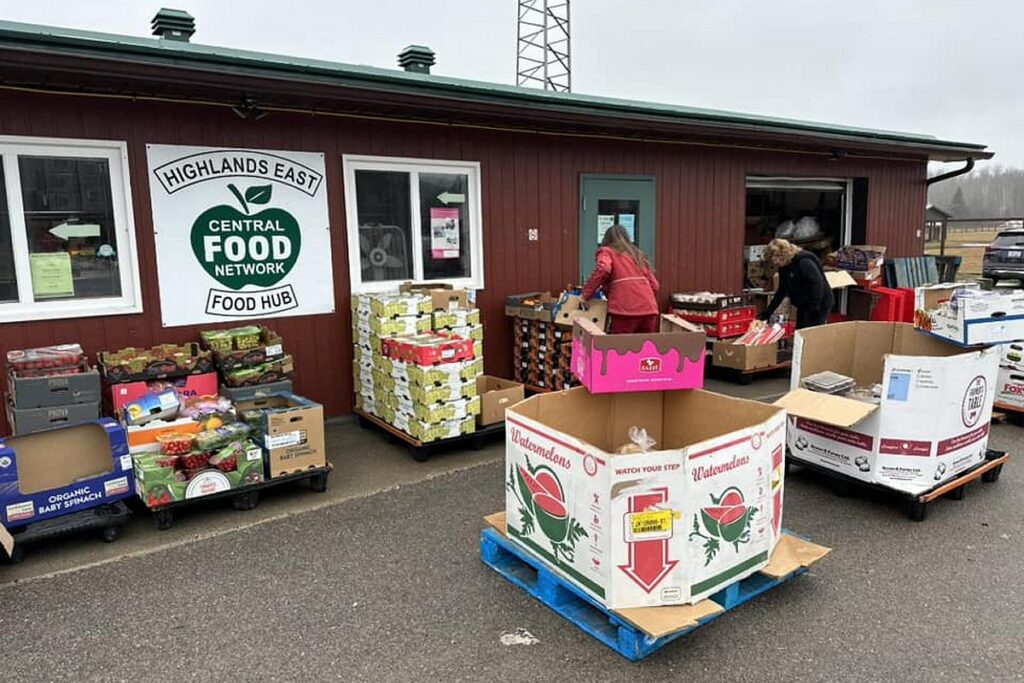 The Haliburton, Kawartha Pine Ridge District Health Unit recently released its 2023 food insecurity and poverty report, which shows that 12.9 per cent of households in Haliburton County struggled to pay for rent, bills, and healthy food in 2020, followed by 10.2 per cent of households in the City of Kawartha Lakes and 8.7 per cent of households in Northumberland County. While food banks and other charitable food programs help some of the most urgent food needs, they are unable to address the issue of insufficient incomes that is the cause of poverty and food insecurity. (Photo: Steve Kauffeldt / Facebook)
The Haliburton, Kawartha Pine Ridge District Health Unit recently released its 2023 food insecurity and poverty report, which shows that 12.9 per cent of households in Haliburton County struggled to pay for rent, bills, and healthy food in 2020, followed by 10.2 per cent of households in the City of Kawartha Lakes and 8.7 per cent of households in Northumberland County. While food banks and other charitable food programs help some of the most urgent food needs, they are unable to address the issue of insufficient incomes that is the cause of poverty and food insecurity. (Photo: Steve Kauffeldt / Facebook)
Affording the cost of putting healthy meals on the table is a struggle for many families living in the Kawarthas region, according to a recent area health unit report.
The Haliburton, Kawartha, Pine Ridge (HKPR) District Health Unit has released its 2023 food insecurity and poverty report, which shows 12.9 per cent of households in Haliburton County are considered low income and struggled to pay for rent, bills, and healthy food in 2020. The same situation applied to 10.2 per cent of households in the City of Kawartha Lakes, and 8.7 per cent of households in Northumberland County.
Entitled Addressing Food Insecurity and Poverty in the Haliburton, Kawartha, Pine Ridge District, the report captures some of the challenges faced by low-income families in the City of Kawartha Lakes, County of Haliburton, and Northumberland County to pay for necessities, such as housing and food, because incomes and social assistance rates are not keeping up with rising costs.
Advertisement – content continues below
Since 1998, Ontario public health units have been mandated to monitor food affordability using the national nutritious food basket, a survey tool used by various levels of government and organizations to monitor the cost and affordability of healthy eating based on Canada’s food guide. The food basket includes approximately 60 nutritious foods and their quantities for people in various age and gender groups.
In its report, the HKPR District Health Unit compares the incomes and expenses of several household scenarios to show how much money would be left over for families and individuals after paying for housing and food. In some situations, those expenses alone exceeded their income, leaving not enough money to pay for other basic needs like utilities, phone, internet, and medications.
“When families don’t make enough money to buy food, they are food insecure,” said Sarah Tsang, registered dietitian and health equity coordinator with the health unit, in a media release. “These families are forced to make hard decisions like if they will buy healthy foods or pay for other basics like rent and utilities.”
Advertisement – content continues below
The HKPR District Health Unit estimates a family of two adults and two children would have spent on average $1,184 per month towards eating healthy in 2023. In this household income scenario within the report, if the family collectively earns minimum wage, they would have spent 28 per cent of their income on food that meets Canada’s food guide. After paying for rent, that would leave them with a few hundred dollars to pay for other basic living expenses.
Food insecurity is a sign of poverty, the health unit noted. Poverty keeps people from meeting their basic needs such as housing, food, clothing, and education.
“Food insecurity is a serious social and public health problem,” said Tsang. “In order to address food insecurity, we need income-based solutions that are long term and that focus on poverty reduction such as, adequate incomes, improving employment standards, increasing social assistance rates and providing (a) basic income guarantee.”
When it came to attaining food, the report showed 20 per cent of Canadian households experiencing food insecurity use food charities, such as food banks and soup kitchens, that offer short-term relief for people who cannot afford to buy their own food.
While food banks and other charitable food programs do help some of the most urgent food needs experienced by a small minority of food insecure people, the report noted, they are unable to address the issue of insufficient incomes that is the cause of poverty and food insecurity.
Advertisement – content continues below
Other findings in Addressing Food Insecurity and Poverty in the Haliburton, Kawartha, Pine Ridge District include the following:
In the HKPR district, 39.8 per cent of tenant-households spent more than 30 per cent of their income on housing.
There are more than 3,300 households waiting for community housing throughout Northumberland County, the City of Kawartha Lakes, and Haliburton County.
Across the HKPR district, there are more than 9,000 recipients of Ontario Works and the Ontario Disability Support Program combined.
The 2023 living wage in the HKPR district is $20.60 per hour.
The HKPR District Health Unit is encouraging residents, municipal leaders, and community partners to learn more about the issues impacting many households in its geographical area.
“It is also important to speak up for income-based solutions, support programs and services that make life more affordable, and support companies that respect the health and dignity of their employees,” the health unit said.
Advertisement – content continues below
Food insecurity is defined in the report as inadequate or insecure access to food due to financial constraints. The physical and mental health of adults and children are impacted by food insecurity. Living in a food-insecure household increases the risk of mental health diagnoses, infections, and non-communicable disease.
Every year, the HKPR District Health Unit publishes a food insecurity report that highlights the struggles faced by low-income families to pay for basic necessities, such as housing and food, because incomes and social assistance rates are not keeping up with rising costs.
The full Addressing Food Insecurity and Poverty in the Haliburton, Kawartha, Pine Ridge District report is available for download from the HKPR District Health Unit’s website.

